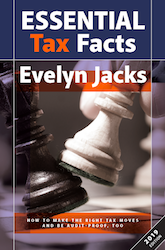Last updated: May 28 2019
RESP: Take Advantage of Tax-Savvy Education Planning

It’s graduation time – such a wonderful moment of achievement for both the students and their parents! Share these essential tips and guidelines about the RESP with new families who are embarking on the savings journey towards a successful education outcome two decades from now. These are excerpted from the newly released Essential Tax Facts, 2019 edition.
A Registered Education Savings Plan (RESP) is a tax-assisted savings plan set up for the purposes of funding a beneficiary’s future education costs. It also serves as a way to split income earned in the plan with the beneficiary, who will be taxed at a lower rate than the contributor, as a general rule, when earnings are withdrawn.
What gives the RESP weight as an important family investment, is that the federal government encourages family educational savings by contributing to your efforts with the Canada  Education Savings Grants and Canada Learning Bonds.
Education Savings Grants and Canada Learning Bonds.
A contributor can invest up to $50,000 per beneficiary as a lifetime maximum. But, government contributions are maximized if contributions are spread over time rather than in one lump sum. You should also know:
- The plan must terminate after 35 years (unless the beneficiary is disabled).
- Minor siblings can substitute as plan beneficiaries if the intended beneficiary does not become a qualifying recipient.
Transfers may be made between RESPs with no income tax consequences. In fact, tax-free transfers between individual Registered Education Savings Plans (RESPs) for the benefit of siblings will be allowed without triggering the repayment of Canada Education Savings Grants (CESGs) so long as the beneficiary of the recipient plan is less than 21 years old at the time of the transfer.
There are several tax advantages to an RESP investment. The subscriber, who contributes money into the plan, does not receive a tax deduction at the time of investment. However, income earned within the plan on the contributions is tax-deferred until the beneficiary student qualifies to receive education assistance from the plan by starting to attend post-secondary school, either on a part-time or on a full-time basis.
Be sure to tap into the CESG. The sweetener to RESP savings is the Canada Education Savings Grant (CESG) which provides additional funds for education. It’s free money given to anyone who contributes to the RESP; there is no income testing.
The grant is 20% of the first $2,500 contributed to an RESP for children under the age of 18. The lifetime maximum CESG is $7,200. To receive the money, the beneficiary of the RESP must have a Social Insurance Number. The CESG room of up to $500 a year (20% of $2,500) can be maximized each year including the year the child turns 17.
Unused CESG contribution room can be carried forward until the child turns 18, however, the grant may not exceed $1,000 in any one year. This means that the catch-up of the grants is limited to two years at a time so it’s better to make contributions each year rather than in a lump sum.
An additional CESG is available if the family net income is low enough.
- For families with net income in the lowest tax bracket (below $47,630 in 2019, $46,605 in 2018), an additional grant is 20% of the first $500 deposited (maximum $100 additional grant).
- For families with net incomes in the second tax bracket (between $47,631 and $95,259 in 2019), the additional grant is 10% of the first $500 deposited (maximum $50 additional grant).
Part two on using the RESP is coming soon! Stay tuned for more information on how to use Education Assistance Payments (EAPs) after withdrawing from RESPs.
** Excerpted from Essential Tax Facts, 2019 Edition – available now! Order online or by calling 1.866.953.4769. Shipping is free, or pick up your copy at the CE Summits. Half price offer when you buy 10 or more! It’s great for client education if you are a professional.
Additional educational resources: Learn more about how to deliver on a goal-based strategic process that involves multiple stakeholders in a family to build, grow and preserve family wealth after taxes, inflation and fees. Become a Real Wealth Manager today; save on tuition when you register by the June 15 deadline!
COPYRIGHT OWNED BY KNOWLEDGE BUREAU INC., 2019.
UNAUTHORIZED REPRODUCTION, IN WHOLE OR IN PART, IS PROHIBITED.




